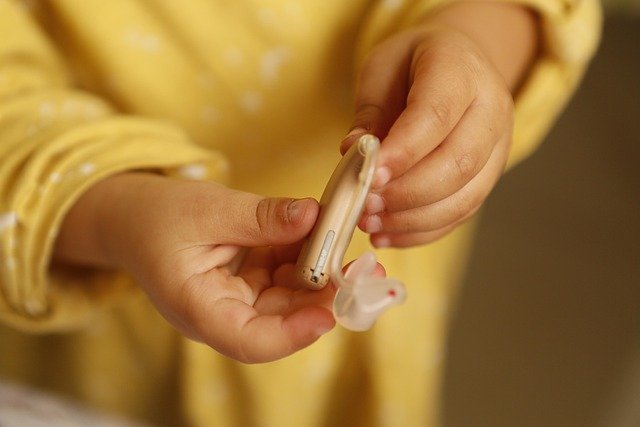Inclusive Instructional Approaches for Diverse Young Learners
Inclusive instructional approaches create classroom routines and learning experiences that respect differences in development, culture, and abilities. For preschool teachers, caregivers, and parents, focusing on play-based learning, targeted observation, and flexible curriculum design supports toddlers and young children as they build literacy, numeracy, language, motor, and socialization skills. Thoughtful assessment and clear communication with families are central to sustained progress.

Inclusive instructional approaches prioritize equitable access to learning for children with varied strengths, backgrounds, and needs. In early childhood settings, instruction blends child-led play and intentional teaching so toddlers and preschool-age children can explore literacy, numeracy, language, and motor skills within meaningful routines. Teachers use observation and formative assessment to adjust pacing and materials, while curriculum planning aligns with developmental milestones and respects family priorities. This opening paragraph outlines the practical focus of the article: strategies that support learning, development, socialization, and collaboration without assuming a single pathway for success.
How can preschool routines support learning and development?
Well-structured preschool routines create predictable contexts where learning and development happen naturally. Consistent transitions, small-group centers, and scaffolded activities help children practice language, early literacy, and numeracy concepts across the day. For example, a morning circle can combine songs (language development), calendar talk (numeracy familiarity), and story time (literacy exposure) while also modeling socialization behaviors. Observation informs which routines need modification for individual children so that classroom flow balances group engagement with personalized support. Routines reduce anxiety and free up cognitive resources for exploration and higher-quality interactions.
What strategies suit toddlers’ play and motor skills?
Toddlers learn a great deal through active play that engages both fine and gross motor systems. Open-ended materials—blocks, sand, water, and art supplies—encourage experimentation while supporting hand-eye coordination and bilateral movements. Outdoor play and obstacle courses promote balance and large-muscle development. Adults scaffold play by naming actions and narrating problem solving, which also advances language and cognitive learning. For toddlers who need extra support, adapted materials or simplified steps let them participate meaningfully; observation helps teachers spot when to fade assistance so independence grows over time.
How to integrate literacy and numeracy early?
Early literacy and numeracy are best taught through integrated, context-rich activities rather than isolated drills. Story-based math problems, counting during snack time, and print-rich dramatic play corners embed concepts in daily routines. Literacy emerges through shared reading, talk-rich interactions, and opportunities for children to mark-make with a variety of tools. Intentional prompts—asking children to predict a story event or compare quantities—guide thinking and language use. Assessment through observation and work samples helps teachers identify growth areas and plan small-group lessons that reinforce concepts while respecting each child’s developmental trajectory.
How does language and socialization fit into curriculum?
Language and socialization are interconnected domains that curriculum designers should weave across activities. Social games build turn-taking and pragmatic language; paired or small-group projects create contexts for negotiation, perspective-taking, and cooperative problem solving. Multilingual learners benefit from routines that honor home languages while providing rich English exposure if applicable; visuals, gestures, and repetition support comprehension. Positive behavioral supports and clear expectations teach self-regulation, allowing children to take fuller advantage of learning opportunities. Aligning curriculum goals with observable social and language milestones makes instruction more actionable and inclusive.
How to use assessment and observation to guide instruction?
Assessment in early childhood relies heavily on ongoing observation, documentation, and family input rather than one-time tests. Running records, anecdotal notes, work samples, and developmental checklists reveal patterns in literacy, numeracy, motor, and socialization skills. Teachers analyze these data to differentiate instruction—planning small-group projects, targeted interventions, or enrichment based on observed needs. Authentic assessment respects cultural differences and avoids deficit framing; teachers compare performance to developmental expectations while considering variations in language exposure and prior experiences. Regular communication with parents provides context and supports coordinated approaches.
How can inclusion and parenting partnerships improve outcomes?
Inclusion means adapting curriculum and classroom environments so all children can participate meaningfully. Universal Design for Learning (UDL) strategies—offering multiple ways to engage, represent, and express learning—allow children with diverse needs to access content alongside peers. Collaborating with families ensures cultural relevance and continuity between home and school routines; parenting partnerships enable shared observation and consistent strategies for language, behavior, and daily living skills. Professional collaboration with specialists, when appropriate, complements classroom practices without segregating children. Inclusion supports stronger socialization and a sense of belonging that positively influences overall development.
Conclusion
Inclusive instructional approaches are practical and observable: they combine predictable routines, play-based experiences, and intentional assessment to support literacy, numeracy, language, motor, and social development. By using focused observation, differentiating curriculum, and partnering with families, educators can create preschool environments where toddlers and young learners participate meaningfully and progress at their own pace. Such strategies emphasize equity and responsiveness rather than uniform expectations, helping each child build skills through supported exploration and interaction.






